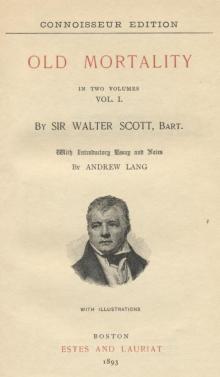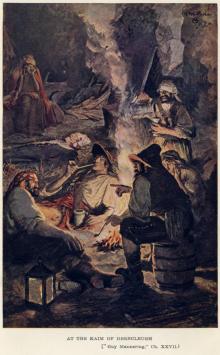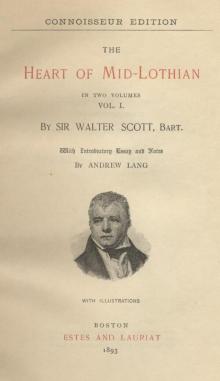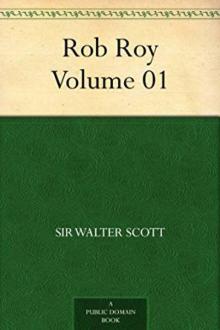- Home
Page 2
Page 2
 Ivanhoe: A Romance
Ivanhoe: A Romance Old Mortality, Complete
Old Mortality, Complete The Pirate
The Pirate Kenilworth
Kenilworth The Black Dwarf
The Black Dwarf A Legend of Montrose
A Legend of Montrose The Monastery
The Monastery The Bride of Lammermoor
The Bride of Lammermoor Redgauntlet: A Tale Of The Eighteenth Century
Redgauntlet: A Tale Of The Eighteenth Century St. Ronan's Well
St. Ronan's Well The Fair Maid of Perth; Or, St. Valentine's Day
The Fair Maid of Perth; Or, St. Valentine's Day Woodstock; or, the Cavalier
Woodstock; or, the Cavalier_preview.jpg) Anne of Geierstein; Or, The Maiden of the Mist. Volume 1 (of 2)
Anne of Geierstein; Or, The Maiden of the Mist. Volume 1 (of 2) Peveril of the Peak
Peveril of the Peak Waverley; Or, 'Tis Sixty Years Since
Waverley; Or, 'Tis Sixty Years Since Old Mortality, Volume 1.
Old Mortality, Volume 1. Waverley Novels — Volume 12
Waverley Novels — Volume 12 The Heart of Mid-Lothian, Complete
The Heart of Mid-Lothian, Complete Quentin Durward
Quentin Durward Waverley; Or 'Tis Sixty Years Since — Complete
Waverley; Or 'Tis Sixty Years Since — Complete Guy Mannering; or, The Astrologer — Complete
Guy Mannering; or, The Astrologer — Complete Rob Roy — Complete
Rob Roy — Complete The Heart of Mid-Lothian, Volume 2
The Heart of Mid-Lothian, Volume 2 Guy Mannering, Or, the Astrologer — Complete
Guy Mannering, Or, the Astrologer — Complete_preview.jpg) Anne of Geierstein; Or, The Maiden of the Mist. Volume 2 (of 2)
Anne of Geierstein; Or, The Maiden of the Mist. Volume 2 (of 2) The Heart of Mid-Lothian, Volume 1
The Heart of Mid-Lothian, Volume 1 Rob Roy — Volume 01
Rob Roy — Volume 01 Waverley; Or, 'Tis Sixty Years Since — Volume 2
Waverley; Or, 'Tis Sixty Years Since — Volume 2 Waverley; Or, 'Tis Sixty Years Since — Volume 1
Waverley; Or, 'Tis Sixty Years Since — Volume 1 Guy Mannering, Or, the Astrologer — Volume 01
Guy Mannering, Or, the Astrologer — Volume 01 The Talisman toc-2
The Talisman toc-2 Rob Roy
Rob Roy Old Mortality, Volume 2.
Old Mortality, Volume 2. The Betrothed
The Betrothed Waverley
Waverley The Surgeon's Daughter
The Surgeon's Daughter Ivanhoe (Barnes & Noble Classics Series)
Ivanhoe (Barnes & Noble Classics Series) The Antiquary
The Antiquary Letters on Demonology and Witchcraft
Letters on Demonology and Witchcraft Trial of Duncan Terig
Trial of Duncan Terig Redgauntlet
Redgauntlet My Aunt Margaret's Mirror
My Aunt Margaret's Mirror Guy Mannering or The Astrologer
Guy Mannering or The Astrologer Marmion
Marmion The Tapestried Chamber, and Death of the Laird's Jock
The Tapestried Chamber, and Death of the Laird's Jock Chronicles of the Canongate
Chronicles of the Canongate The Fair Maid of Perth or St. Valentine's Day
The Fair Maid of Perth or St. Valentine's Day The Heart of Mid-Lothian
The Heart of Mid-Lothian Lady of the Lake
Lady of the Lake